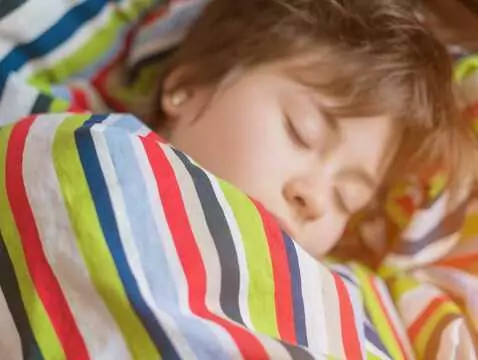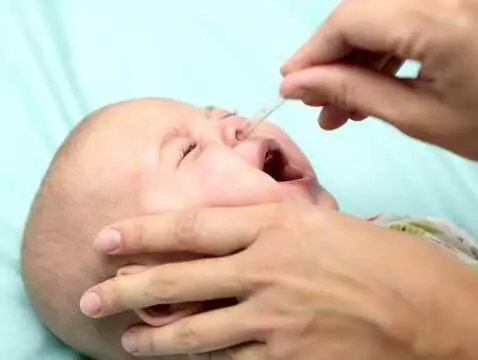
Recurrent nose, ear and throat infections and the autism spectrum in children
Recurrent nose, ear and throat infections may be linked to the autism spectrum in children - these are the conclusions reached by a team of researchers who published an interesting study on the link...

What should you do if your child hears crackling in his ears?
Does your child say they hear newtons in their ears? Noise, 'feeling of the wind', crackling sounds are all signals that should worry us parents and encourage us to see an ENT specialist. What can a...

Unusual objects swallowed by children - first aid
All it takes is a moment and disaster strikes. Children, both small and big, can unfortunately put objects in their ears and noses. Sometimes they also swallow unusual objects. How can you help your...

Hearing screening in children - when to go for it?
The newborn hearing screening programme can help diagnose hearing problems in toddlers quickly and early. But what if you are concerned about your older child's hearing? When should you test?

A snoring child and upper respiratory problems
Does your child snore? Snoring can have many causes - a blocked nose, a cold, dryness in the nasal cavity. However, snoring can also be caused by an upper airway problem.

Removing a tonsil - how do you prepare your child for the procedure?
Problems with tonsils are the bane of many parents. How do you prepare your child for the procedure? What should you pay attention to? When is a tonsillectomy necessary?

Sinusitis in a child - symptoms, treatment
A feeling of a blocked nose, increasing pressure near the cheekbones, forehead and eyes, fever - these are the first symptoms indicating that we may be dealing with sinusitis.

Tongue frenulum problem in a child
The sublingual frenulum is the thin membrane under the tongue that attaches it to the floor of the mouth. A frenulum that is too short can affect a child's sucking and speech development problems....

Rhinosinusitis in children - management
Rhinosinusitis is one of the most common childhood diseases. It is predominantly the result of a viral infection and only a small percentage (5-13%) is complicated by bacterial superinfection (mostly...

Laryngeal papillomas in children - what are they and how to guard against them?
Laryngeal papillomas in children are pathological structures whose strong tendency to grow causes a direct threat to the patency of the airways. Infection can occur via the bloodstream - during...

Understanding your child's hearing
Hearing is a sense that is developed at birth, hence already during foetal life, in the womb, the child is able to perceive sounds. During the first year or so, development progresses thanks to...

A blocked nose without a runny nose in a child - what does it mean?
A blocked nose is a symptom of a runny nose; however, it very often occurs without a runny nose. The condition is tiresome especially for children. The reasons for the appearance of this symptom vary...

Diagnostic method for palatine tonsil and pharyngeal tonsil hypertrophy and the age of the child
Hypertrophy of the palatine tonsils and the pharyngeal tonsil is a problem that particularly affects children - younger and older. In order for a diagnosis to be made well, an appropriate diagnostic...

Respiratory diseases the most common cause of hospitalisation of children in Poland
Diseases of the respiratory system are particularly dangerous for small children and infants, due to the specific structure of this system - the pathways are shorter and narrower and, in addition,...

Ear leakage in a child
Many children in infancy and early childhood have ear problems. Upper and lower respiratory tract and ear infections are very common. It is important to remember never to underestimate this condition...

How do you look after children's ear hygiene?
A child 's ear requires specialised care. Many parents make a lot of mistakes with this. The biggest mistake is when parents use ear sticks for cleaning. Incorrect care of a child's ears can lead to...

Flushing your child's ears
Cleaning a child's ears is a task that belongs to the parents. Unfortunately, very often they do not perform it correctly which can lead to serious hearing problems and even hearing loss. Too much...

Laryngitis in children
Laryngitis, is a very common infection in children, especially during their time in nurseries, kindergartens and the early years of primary school. It is a viral infection, although there are cases...

Hypertrophy of the tonsils in children
The lymphatic system of the pharynx, the so-called Waldeyer's ring, is formed by: palatine tonsils, lingual tonsil, pharyngeal tonsil, tonsillar tonsils, lymph nodules of the posterior pharyngeal...

Too short frenulum of the tongue in a child - what to do?
Shortening of the frenulum of the tongue in a child (sublingual frenulum), is otherwise known as ankyloglossia and is one of the most common anatomical defects in the oral cavity.


